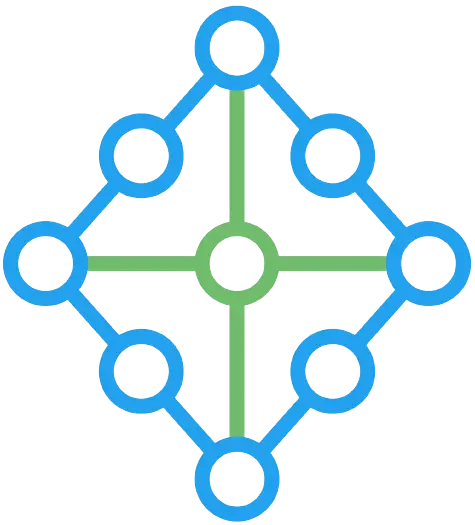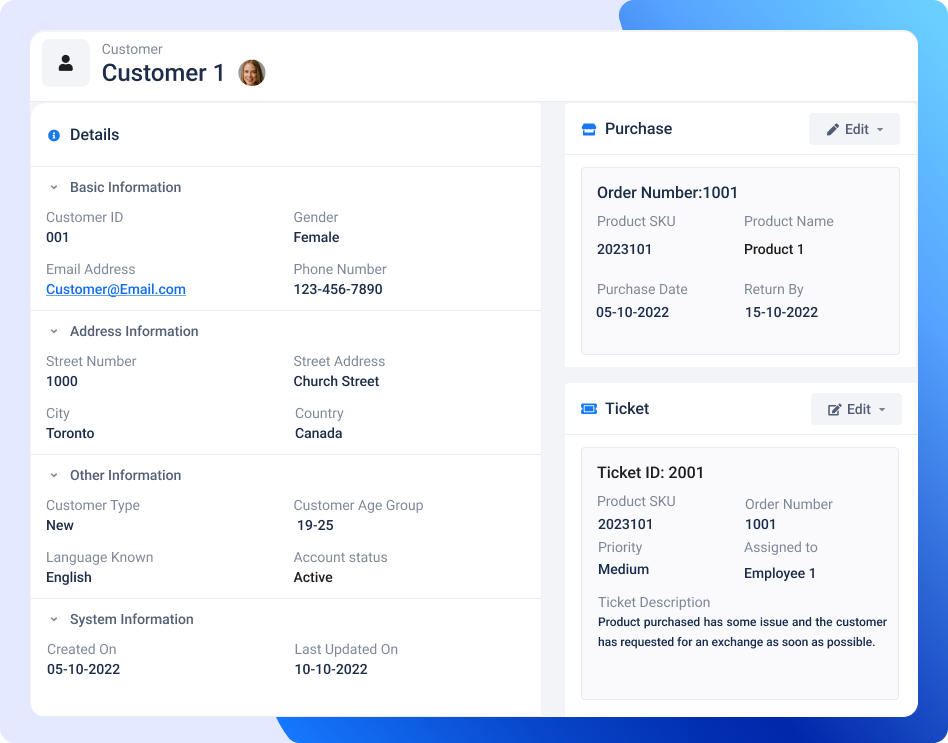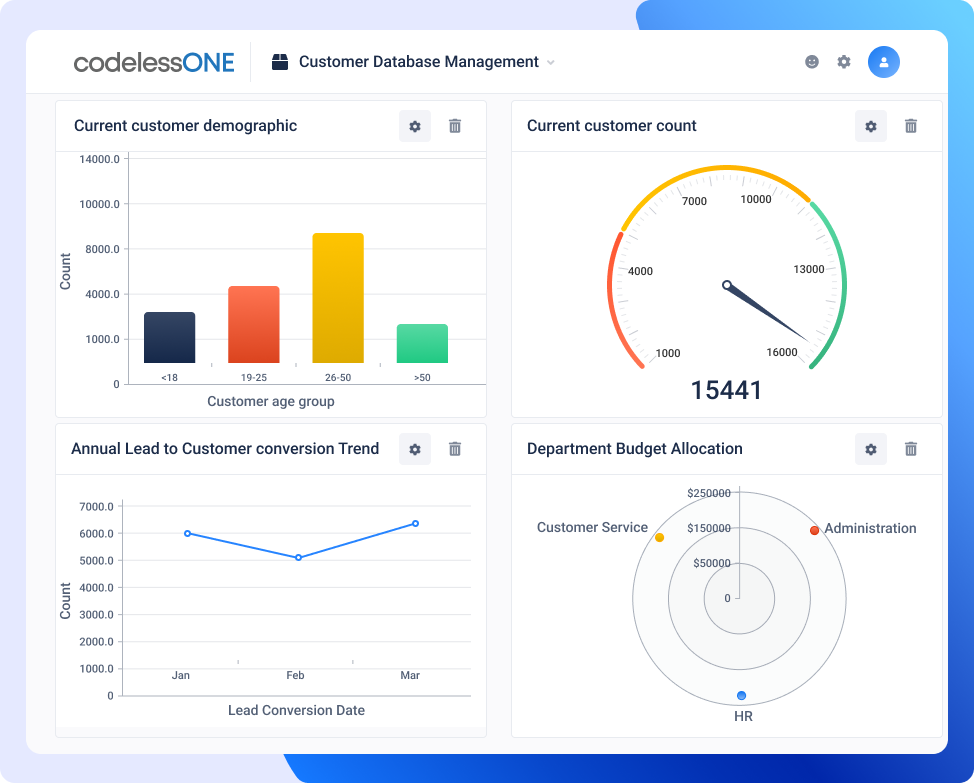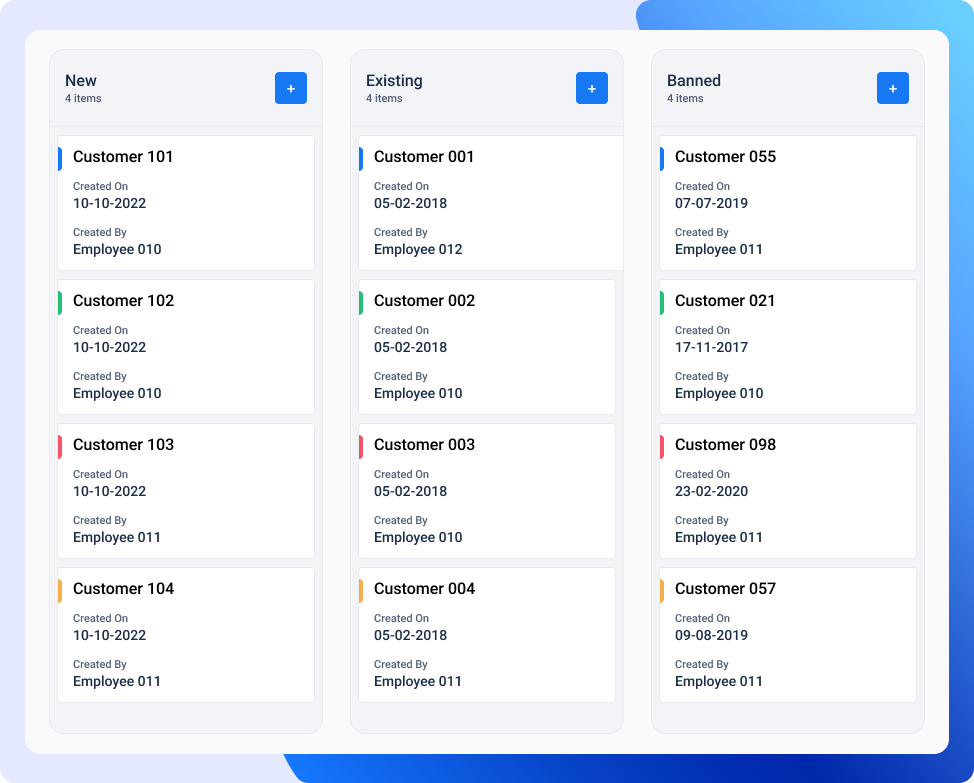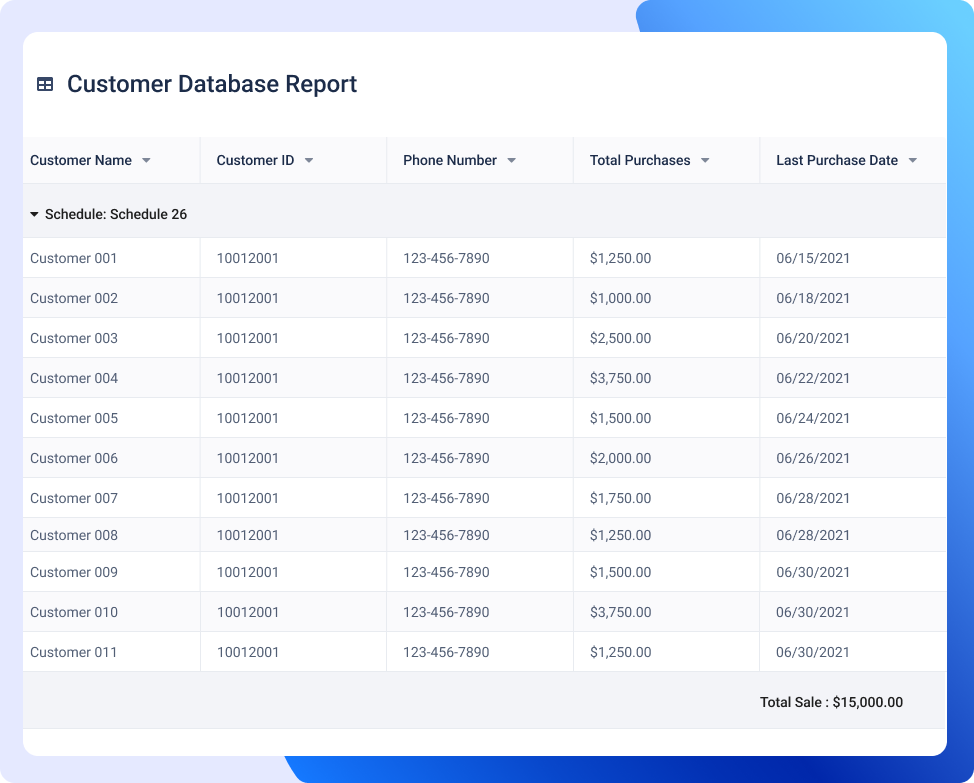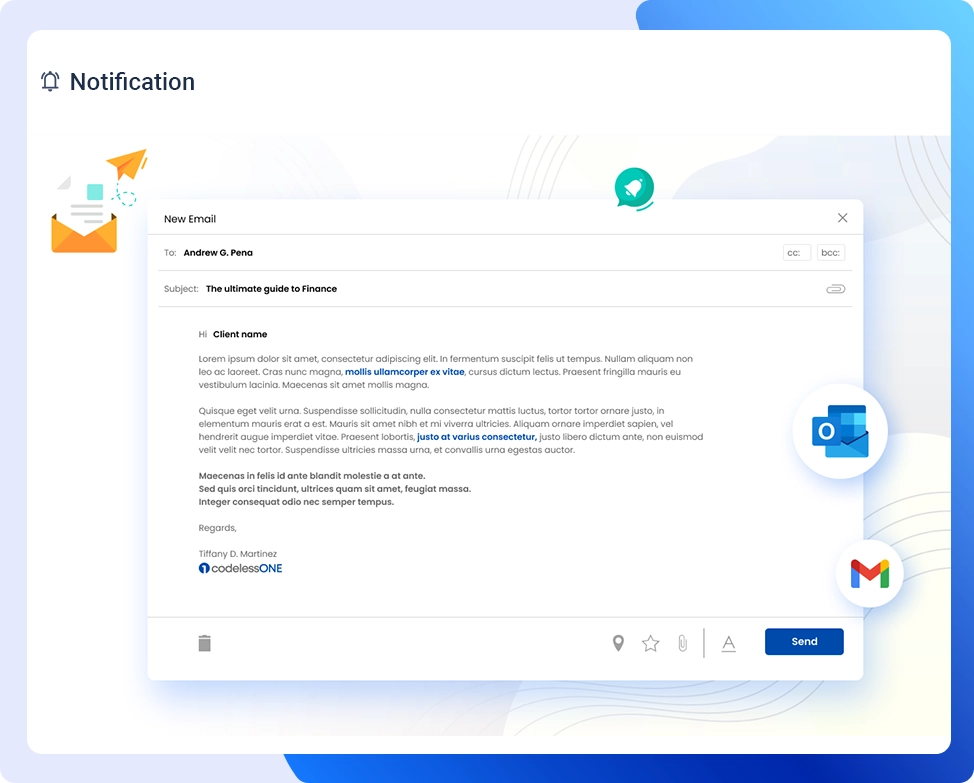Categories
Customer Database software allows your organization to store, organize, and manage customer information in a centralized location.
- Display real-time metrics and data on customer engagement and interactions.
- Overview of customer accounts and statuses.
- Display customer demographics and segmentation data.
- Present customer feedback and engagement data.
- Show the purchase history and behaviour of the customer.
- Easily track the progress of customer support tickets, moving them from “New” to “In Progress” to “Completed.”
- Visually represent customer requests’ status to understand the current workflow and identify bottlenecks.
- Quickly prioritize customer requests, reducing the time and resources needed to complete tasks.
- Quickly see the workload and capacity of different team members to help plan and allocate resources effectively.
- Identify top-performing sales representatives and regions
- Analyze customer purchasing patterns and trends
- Identify the most profitable products or services
- Generate customized reports for specific departments or clients
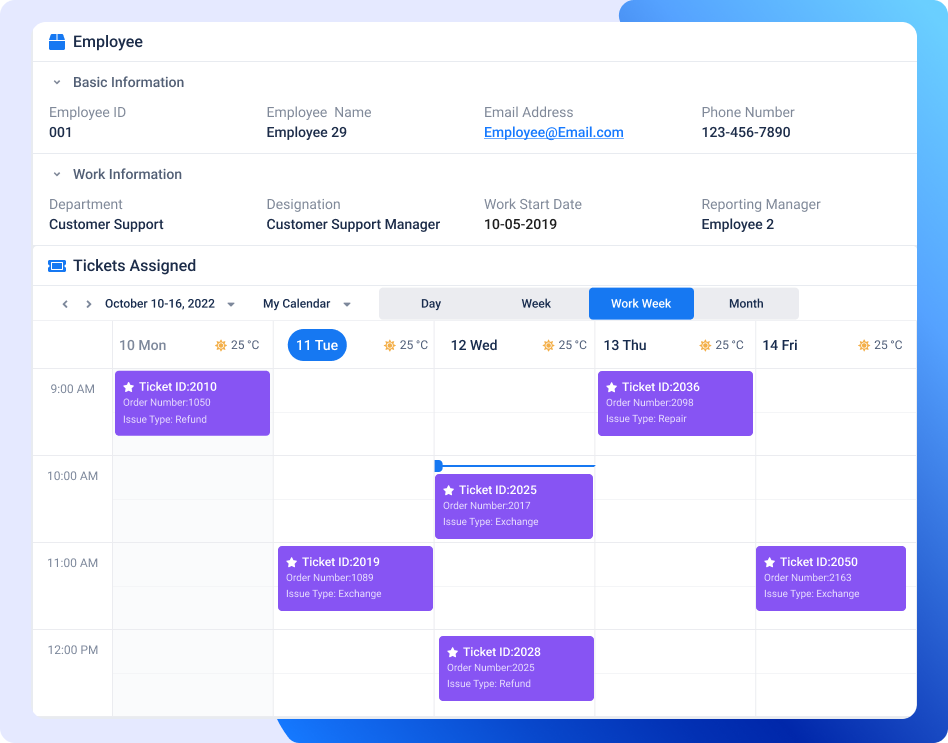
- Easily schedule and manage customer appointments, ensuring requests are handled promptly and efficiently.
- Seamlessly adapt to changes in customer availability without disrupting the workflow.
- Easily see when team members are unavailable, reducing the likelihood of double-booking and conflicting appointments.
- Easily coordinate customer appointments with other team members.
- Notify when a new customer is added.
- Send reminders about upcoming customer follow-up tasks.
- Inform changes or updates to a customer’s information.
- Notify issues or problems that arise with a customer.
- Send reminders to submit customer-related expenses for reimbursement.
- Send notification when a customer’s account is overdue for payment.
Benefits and use cases of customer database management software:
Customer Data Optimization:
Store, organize, and manage customer data in a centralized location
Targeted Customer Segmentation:
Identify and target specific customer groups.
Analyse customer Purchase:
Track and analyze customer behavior and purchasing patterns.
Enhance Customer Experience:
Improve customer relationships and the customer experience.
Customer satisfaction:
Manage customer complaints and issues.
